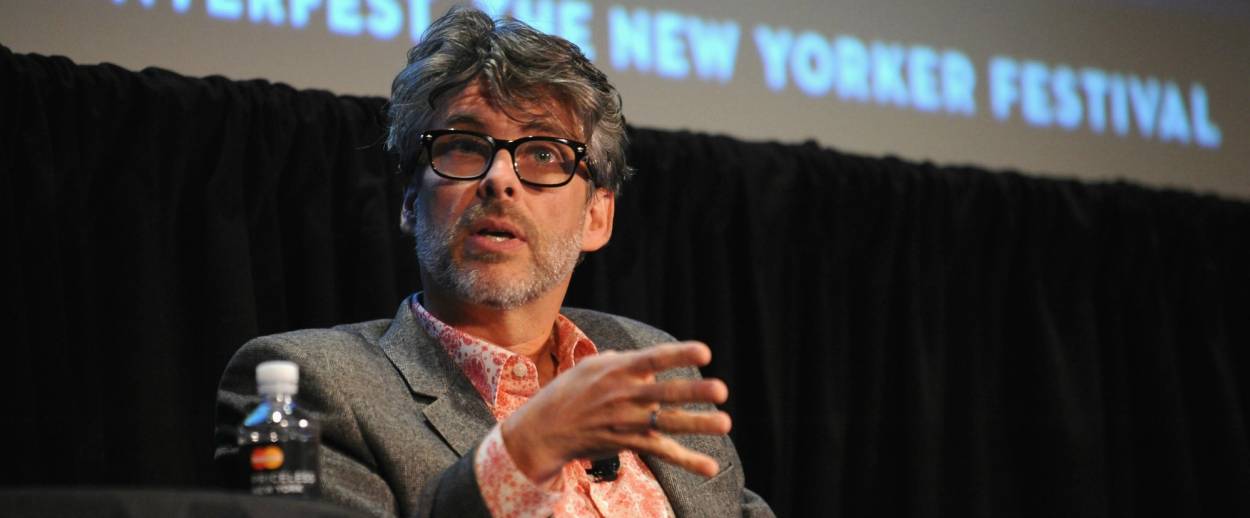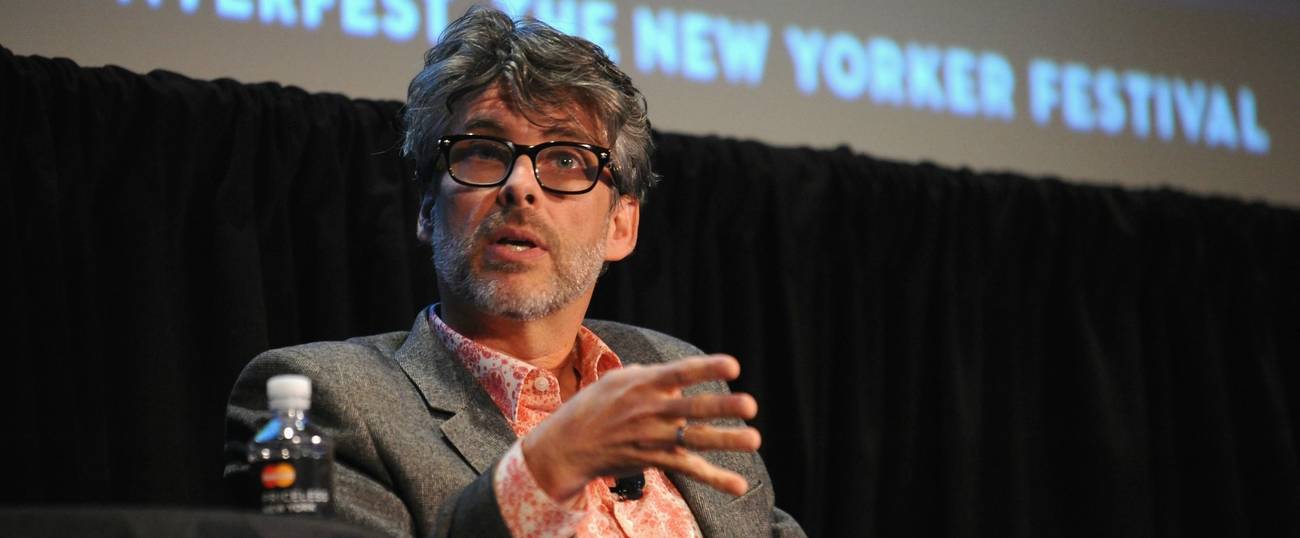Paying the Price for Abandoning Jewish Peoplehood
The lesson in the Chabon Affair: Reform Judaism is all about sociology, not ideology




I have read with great interest Rabbi Ammi Hirsch’s thoughtful letter to HUC Interim President David Ellenson and Dean Joshua Holo regarding the now chatter-consequential address of Michael Chabon to the HUC-LA ordinees and degree recipients. Ammi referred to it as a “commencement speech”–a secular term I do not consider “religiously” descriptive. (Although references to HUC-JIR as one’s “alma mater” ring just as inauthentic and are still in routine usage. For a generation now, HUC has been internally granted the moniker “our yeshiva” on the one hand and–often from the same lips–hailed as “your alma mater.” This is notably symbolic. More below.)
Ammi raises some very important issues, and I think his crie de coeur Is shared privately by hundreds of Reform rabbis. That is because he is asking pointed questions and seeking definitive answers we all know very well do not exist.
There is no serious common ideology or “guiding principles” than bind a “movement” called “Reform Judaism.” It is, in Arnold Jacob Wolf’s famous truculent prose, “a pension plan in search of an ideology.”
My own belief is that the twin 20th century phenomena–the Shoah and the establishment of Medinat Yisrael–were body blows to universalist, progressive revelationist, unique-avoidance Classical Reform Judaism. These two near-simultaneous eruptions of the determinative persistence (on the one hand) and necessity (on the other) of unique and discrete Jewish identity left Reform in a Kafkaesque ideological trap. It has never been freed.
As I have sensed for many years, it is far more perceptive, realistic and definitive to see the phenomenon of Reform Judaism as one of sociology rather than ideology. As much as we all hate to admit it, American Jews (who, for whatever reason, seek synagogue affiliation) have apportioned placement on a “level of intensity” scale that traps Reform in (on a 10 point scale) the 1 – 3 range, Conservative in the 4 – 7 range and Orthodox in the 8 – 10 range. Yes, there is seepage. Yes, there are members of Conservative congregations who themselves are in the 1 – 3 range and some who pray in Orthodox congregations who might put themselves at 5 – 7 on such a sliding scale of intensity, but these observable exceptions are not enough to challenge the fundamental self-arrangement.
Ammi wants to know “what beliefs . . . we uphold and seek to transmit to the next generation.”
First of all, bureaucracies like the URJ or HUC-JIR do not “believe” anything. As the Reform Movement is deliberately structured, it is the congregational arm (now the Union for Reform Judaism) which sets its standards, not the Movement seminary. The Conservative Movement is otherwise arranged (as all of this was once conceived), with JTS serving as the citadel of articulated standards and principles. And in any event, there is no ideological litmus test to obtain membership in any Reform synagogue. No one asks if you “believe in” God, or tikkun olam, or techiat ha-kol, or whether tachanun should be restored to the Reform Jewish liturgy. There are no litmus tests (other than that your initial check clears).
Second, we Reform Jews (since the 1930s, before which a serious if suicidal universalism – ethnically viscous and ideologically disciplined –prevailed) have surrendered ideology to a quest for affiliation, to service our now-collapsing dues-based business model. I find it fascinating that so many non-Jews (even believing and affirming Christians) find comfort and casual social affirmation in our “religious services.” That is because there is nothing there that delineates. There is nothing there that demarcates. There is nothing there that discriminates. There is nothing there to reject, because . . . well . . . there is nothing there.
What is the difference between “Reform Jews” and “Conservative Jews”? I certainly would not repair to religious ideology in order to answer this. Most Jews do not have a religious ideology. And I would not answer this by looking only at venues of affiliation. These can be governed by many random factors such as perceived pre-school quality, b’nai mitzvah date availability, location, etc. No, I would look to a much simpler and direct formula. There are only three questions.
1. Is the public observance of reasonably predictable standards of kashrut important to you?
2. Is it your taste and preference that the central religious motif (“services”) of the synagogue be one of presentation or experience? To put this another way: is the essential synagogue experience for you the performed singing of Sh’ma Yisrael or the private recitation of the Amidah?
3. Do you engage in any home-based Jewish observance other than a “Passover Seder”?
After 40 years in the vineyard, I am convinced that these arrangements are not that complicated. Our flocks are non-observant. They know little of Jewish history, less of Jewish religious behavior, almost none have any comfort with Hebrew, and they are not “keeping a Jewish home” – which is to say they do not light Shabbat candles or welcome Shabbat or Yom Tov with a family meal, their observance of Hanukkah for a few years is a brief Christmas-driven pediatric priority at best, the Passover Seder is a big meal with scant ritual, and such efforts as a sukkah, or Shabbat/Yom Tov recognition are all alien. And a mitzvah-system of interlocking obligations to the God of Israel to whom am yisrael is bound (the essential starting point of Judaism) has simply evaporated for the overwhelming percentage of our people.
Conservative Judaism has collapsed because the non-Orthodox numbers for whom my three questions are even cognizable have rapidly shrunk. And Reform Judaism is collapsing because . . . well, because we have learned that size doesn’t matter. We speak of synagogue membership as a phenomenon of our mailing list. American churches chuckle at such sleight-of-hand. How many do you see on a weekly basis? So big synagogues may mean lots of funerals and pastoral visits for their clergy, but little more than term funeral insurance for their membership. There is no ideology.
Accordingly, as we have all witnessed, support for modern Israel as the culmination of millennia of homeless alienation bound by an ideology of restoration has shriveled. Shriveled. Our people know precious little about Israel and care less and less and less. Some have actually embraced self-condemnation as they see Israel–yes, Israel!–as an embarrassing racist gush.
What changed? Where went Classical Reform Judaism and its hyper-extension of universalist values? Well, what changed was the collapse of cultural anti-Semitism. Sixty years ago Jews could be ignorant of their tradition, resistant to religious norms, and anxious to end all cultural barriers to acceptance (such as membership in exclusive clubs). But they remained Jews because mixed marriage was a shanda among the goyim!
Now the barriers are gone. Once exclusive country clubs have Jewish Presidents, classic university fraternities and sororities are integrated, quotas (for Jews) are history, and our political elite (along with everybody else) have assimilated Jews into their familial mainstream (see Kennedy, Clinton, Trump, Biden, Gore, Kerry) without a whimper. We have been hugged to death.
So Rabbi Hirsch wants somebody to “remind the Jewish world what Reform Judaism believes.” There ain’t no ideology, Ammi. As you survey your minyan surely you will privately confess the same. And what do we face now?
I call it Jewish global warming. Only Orthodox Judaism in the diaspora, especially its so-called modern variety, and little Israel, where the near-universal embrace of the Shabbat dinner reminds all of the power of simple religious norms to give integrity to a culture – only they will survive the rapidly melting glaciers of oceanic assimilation.
You could cry. Ammi speaks of “the current atmosphere of extreme vilification of Israel . . . [and] the massive unsustainable abandoning of Judaism, that is affecting our movement more than the Conservative and Orthodox movements.” Welcome to the Pyrrhic victory of the great classical Reform ideology.
Yes. Chabon (like most American Jews today) “understands Judaism as a ghetto.” He abhors “enclaves.” Endogamy is a “ghetto of two.” Our hitherto flocks, nurtured on universalist values and called to disdain Jewish particularism, have called our bluff.
Stephen Samuel Wise figured out that his Sunday morning sermons in Carnegie Hall brought him fame and finessed oratorical skill, but brought serious Shabbat-based and am yisrael chai-based Judaism scorn and ridicule for its ever-inward tendencies. Yes, Ammi, “the abandonment of Jewish peoplehood” was indeed the “fatal marginalization of Reform Judaism.” It was fatal. We are presiding over a funeral.
See the truth. See it and weep.
Weep. Except for the triumph of Medinat Yisrael. A rose among the thorns: The greatest expression of national liberation in human history. Evidence of miracles–the greatest to befall us since the Exodus from Egypt. Little Israel, now positioned to protect itself and its borders and be a beacon of righteousness and virtue on the world stage. Not perfect, but not (in a mere 70 years) pathetic in the least. For this, we can also weep tears of joy, of honor, of fulfillment, of confirmation. No funeral this, but a whole new life, just beginning. Nefesh Yehudi–behold it, in all its splendor.
Af al pi chen, am yisrael chai.
Rabbi Librach is a recently retired Reform Rabbi, having served congregations in Illinois, Massachusetts and Connecticut. He now resides in Waltham, MA. His essays and articles have appeared in various publications, including Commentary, the Wall Street Journal, and the Journal of Reform Judaism.